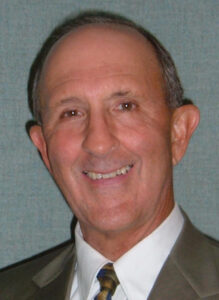Towards the New Consciousness That Easter Brings

The Easter experience is about the birth of a new consciousness. It is a consciousness that burst upon the followers of Jesus through his suffering unto death on the cross. In many ways, Jesus’ followers, and others, too, were caught off guard. While the despair of the cross was not anticipated, people needed time to accept that, over time, the way of suffering love would become the way of Christian faith.
The new consciousness of Easter revealed a fuller awareness of what it means to be human. To be fully human is to realize the depths of our interconnection to God and the whole of humanity. It is the awareness of seeing our personal self-interest in light of the interests of the whole. It is the awareness, as well, of the need to live lives of ongoing personal transformation. Together, this is the new consciousness that Easter brings.
An example from the Bible of this new consciousness is seen in the mystical experience of Jesus and Mary Magdalene in John 20. Along with the gospel writers–particularly John–both Jesus and Mary Magdalene were mystics. Mystics are persons who have deep, personal experiences of the sacred and of God. While these experiences are subjective and cannot be easily described, nonetheless, for the mystic they are profoundly real.
At the Tomb with Mary Magdalene and Jesus
To begin with, in the crucifixion/resurrection stories, Mary Magdalene is everywhere. I do not believe this is accidental. I believe Mary is everywhere because she needed to be there and the gospel authors, to their credit, could not and did not deny it.
With all of this in mind, in Mary’s mystical encounter with Jesus at the tomb in John 20, a new consciousness is born. This new consciousness springs from a new awareness of the deep love shared between Mary Magdalene and Jesus. Whether we think Jesus and Mary shared intimate relations or were, perhaps, married is immaterial. What can hardly be denied is their love for each other. Let’s revisit the encounter in John 20.
In the early morning hours, Mary goes to the tomb. Noting that the stone has been rolled away, she runs back to tell Peter and the beloved disciple. They run to the tomb; the beloved disciple arrives first, but does not got in. Following him, Peter arrives, goes in the tomb and sees the linen wrappings and the cloth that had been on Jesus’ head. The beloved disciple, then, goes in, sees, and believes. Not finding Jesus there and not knowing what to think, the disciples return to their home.
Meanwhile, Mary, standing outside the tomb, is weeping. Bending over to look inside the tomb, suddenly, Mary has a mystical experience at the tomb, an experience that takes her to new levels of meaning and love. She sees two angels in white. They say to her, “Woman, why are you weeping?” She answers, “They have taken away my Lord, and I do not know where they have laid him.
The two angel figures inquire into the meaning of Mary’s tears. She says it is her loss; that Jesus is dead and now his body is missing. She still thought Jesus was bound by his body (i.e., he had not yet been alive to her in the resurrection experience). Thus, Mary can only be near to Jesus by being near his deceased body.
Turning around, Mary sees Jesus but does not recognize him. Jesus says to her, “Woman, why are you seeping? Whom are you looking for?”
Thinking Jesus is the gardener, Mary answers, “Sir, if you have carried him away, tell me where you have laid him and I will take him away (John 20:15).” At this point we should ask, why does Mary Magdalene claim the right to take the body of Jesus away? This right would normally be reserved only for the closest of kin and would have been inappropriate for any woman who was not the deceased person’s wife.
Jesus then says to her, “Mary!”
In this heightened mystical moment, everything changes. Up to now, Mary has yet to experience the risen Jesus. No doubt recognizing his voice in the announcing of her name, Mary turns to him, saying in Hebrew, “Rabbouni!” (which means teacher). Rabbouni is also the name the wife of a Rabbi might use to address her Rabbi husband with honor in a public setting. John’s use of this term cannot be accidental.
What, then, is the author of John trying to tell us in this resurrection story? Is it that the love of God that was alive in Jesus is still alive? And that we know this, now, in the mystical experience of Mary at the tomb where Mary experiences Jesus’ love being still alive to her?
In this moment, when her name, “Mary” is sounded, the deep love between Jesus and Mary is confirmed. The deep love of God, known in Jesus, has not been broken. Her new identity, her new being in this mystical experience of resurrection is lifted up. Again, in this moment, she knows she is known and loved. In this heightened, mystical moment, Mary is now able to say, “I have seen the Lord.” What is more, she has also seen the meaning of life, along with the new consciousness this reveals.
The new consciousness that Easter brings is precisely the new awareness that our lives are always about the ongoing process of personal transformation. Just as Mary Magdalene was transformed in her mystical experience of Jesus at the tomb, in the same way, our lives–too–are transformed as the suffering love of Jesus comes alive in our lives as well.

